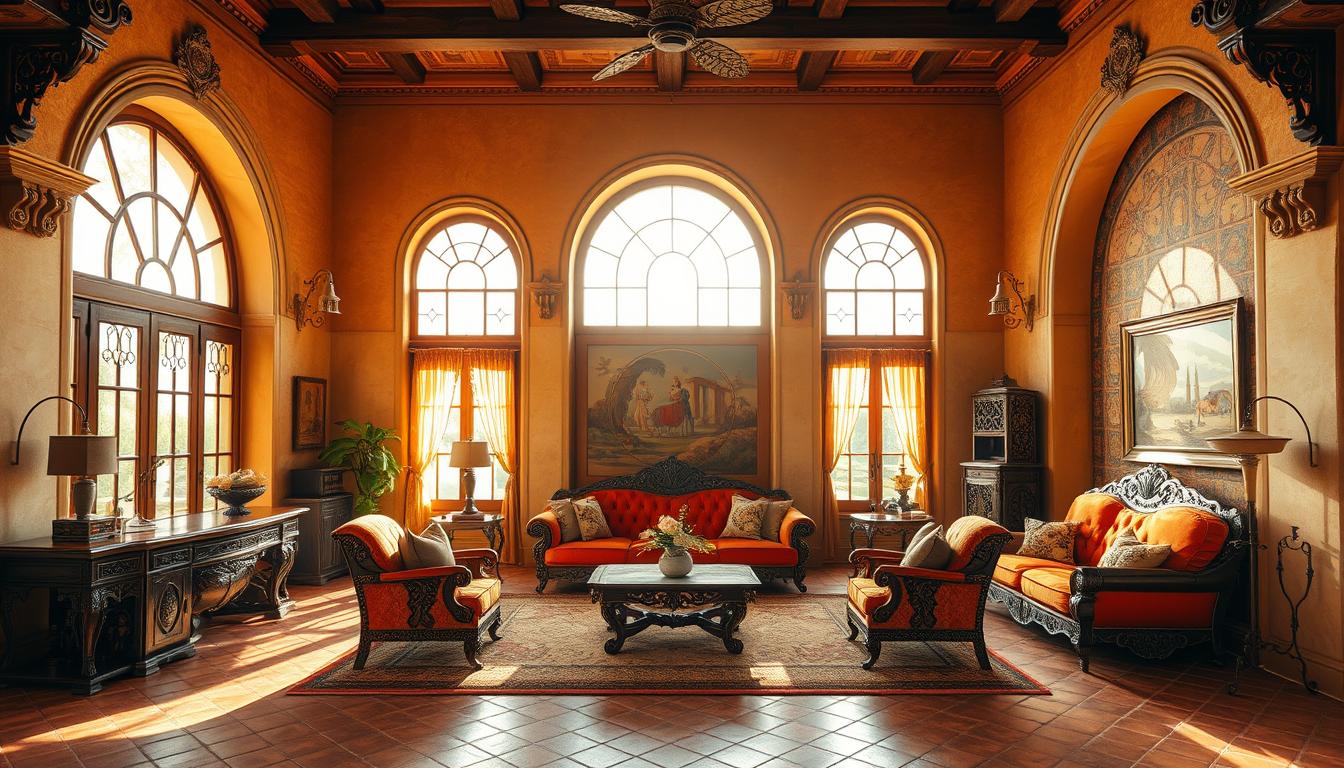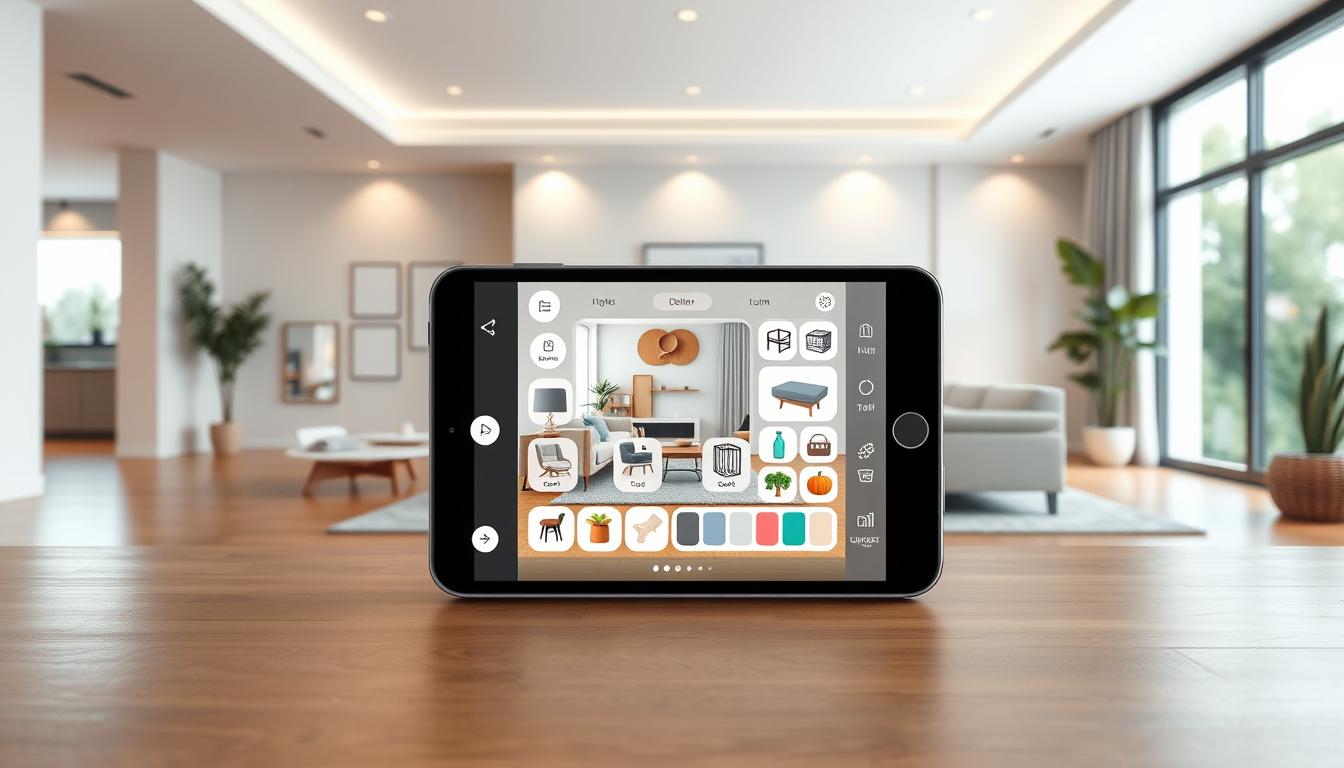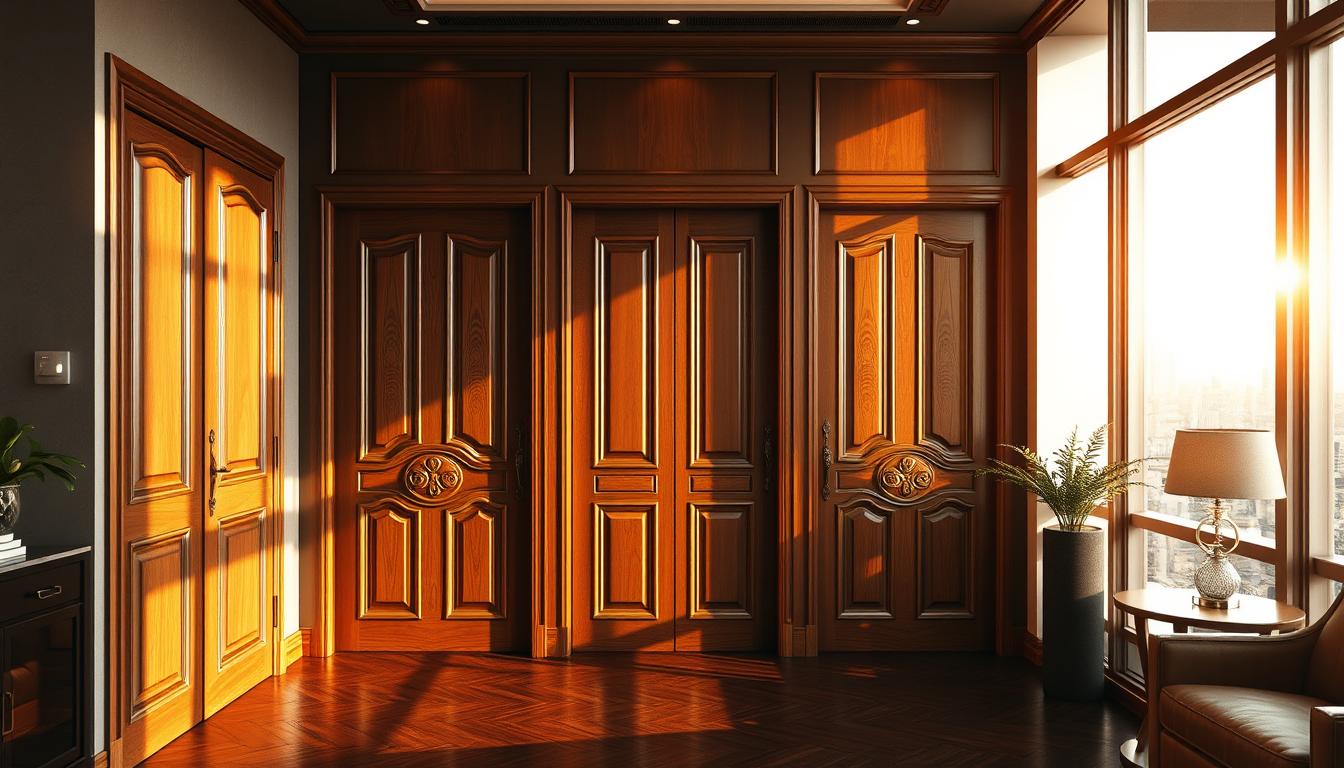Did you know Spanish-style homes are very popular in the United States? They mix the warmth of old times with the sleekness of today. This makes them a cozy and stylish place to live.
We’ll look at what makes this interior design so special. We’ll talk about bright colors and fancy furniture. By using these, you can make a beautiful Spanish-inspired home that shows off your style.
Key Takeaways
- Understand the core elements of Spanish-style interior design
- Learn how to blend traditional and modern elements
- Discover the perfect color palettes and furniture choices
- Create a unique and welcoming living space
- Explore the importance of cultural influences in design
Understanding Spanish-Style Architecture
Spanish-style architecture is special because it mixes different cultures in a beautiful way. It has a rich history, lots of details, and uses natural materials.
Characteristics of Spanish Architecture
Spanish homes are famous for their rustic home decor and hacienda style. They use terracotta tiles, wrought iron, and stucco. These features make the homes look great and show the area’s culture.
- Use of natural materials such as stone and wood
- Incorporation of arches, domes, and columns
- Ornate details, including intricate tile work and wrought iron
Historical Influences on Design
The mediterranean design in Spanish architecture shows the area’s history. The Moors, for example, are known for their arches, domes, and tile work.
Important historical influences on Spanish architecture include:
- The Moorish influence, seen in arches and tile work
- The Mediterranean style, using natural materials and focusing on outdoor areas
- The Spanish Colonial style, mixing different cultures and architectural styles
Knowing these influences helps us understand Spanish-style architecture better. We can then use these elements in our own home designs.
Key Elements of Spanish-Style Interiors
Spanish-style interiors are all about color, texture, and architecture. These elements blend to make a cozy and welcoming space. This is what makes Spanish design so special.
Use of Color and Texture
These interiors are known for their bright color schemes. Think terracotta, ochre, and deep blues. The colorful decor makes these spaces feel unique. Texture is also key, adding depth and interest.
If you want to add Spanish design to your home, check out Spanish interior design. It’s full of great ideas.
Importance of Tile and Stone
Spanish tiles are a must in Spanish-style interiors. They’re used on floors, walls, and as decorations. Tiles and stone add texture and a touch of history.
Using different patterns and materials creates an eclectic design. This is what makes Spanish interiors stand out. By choosing the right elements, you can make your home feel warm and Spanish.
Creating an Inviting Entryway
A well-designed entryway is key in Spanish-style homes. It gives a peek into the home’s personality. The entryway is a vital part of Spanish-style interiors, setting the mood for the rest of the house.
To make an inviting entryway, start with the door. The door is more than just a way in; it’s a statement that shows the home’s style.
Choosing the Right Door
For a Spanish-style home, a solid wood door with detailed designs is perfect. You can find many ideas on Pinterest for Spanish-style foyers.
When picking a door, think about the material, color, and hardware. A door with a rich, warm finish fits well with the rustic home decor of Spanish-style interiors.
Adding Architectural Details
Architectural details can make the entryway feel special. Things like arches, columns, and ornate tile work add depth and character.
These details not only make the entryway look better but also honor Spanish architectural traditions. For example, an arched entryway can make the space feel grand. Ornate tiles can add elegance.
By carefully choosing the door and adding architectural details, you can make an entryway that welcomes visitors. It will also show off the Spanish-style home’s charm.
Selecting Furniture that Complements Spanish Style
The secret to a beautiful Spanish-style home is choosing furniture that shows off the style’s charm. In Spanish interior design, furniture is key to making a space lively.
It’s important to find furniture that looks good and works well. This mix of beauty and function is what makes Mediterranean design so loved. It brings together elegance and comfort.
Traditional vs. Contemporary Furnishings
Spanish-style interiors often mix old and new furniture. Traditional pieces, like carved wooden furniture, bring history and authenticity. Contemporary items add modern flair and sophistication.
For example, a classic Spanish sofa can go with modern coffee and side tables. This mix is a key part of Spanish interior design. It lets homeowners add their own touch while keeping the style’s heart.
Incorporating Rustic Elements
Rustic elements are essential in Spanish-style interiors. They add warmth and character. Wooden beams, stone fireplaces, and terracotta tiles are great examples.
A wooden console table with a worn look can enhance your entryway. A stone-topped side table can bring the outdoors into your living room. These elements help create a unified look that shows the warmth and elegance of Mediterranean design.
Color Palettes for Spanish Interiors
Choosing colors for Spanish-style interiors is an art and a science. It’s about mixing warm tones with bright accents. This mix creates a unique and welcoming space.
Warm and Earthy Tones
Spanish interiors often use warm, earthy colors like terracotta, ochre, and sienna. These colors remind us of the Spanish countryside. They make the space cozy and inviting.
To add these warm tones to your home, try these ideas:
- Use terracotta or ceramic tiles for flooring to add warmth and authenticity.
- Incorporate ochre and sienna hues through wall paint or decorative accessories.
- Choose furniture with a natural, earthy finish, such as wood or wrought iron.
Accent Colors to Enhance Spaces
While warm tones are the base, accent colors are key to adding depth and interest. Deep blues, vibrant yellows, and rich greens are great choices. They make the space more lively and interesting.
Here are some ways to add accent colors to your Spanish-style home:
| Accent Color | Usage |
|---|---|
| Deep Blue | Use in ceramics, textiles, or as a wall color in a single room to create a focal point. |
| Vibrant Yellow | Incorporate through accessories like vases, pillows, or wall art to add a pop of color. |
| Rich Green | Bring in through plants or greenery, or use in upholstery and drapes to add a natural touch. |
Interior design experts say, “The secret to a great Spanish-style interior is mixing warm tones with the right accent colors. This creates a space that’s both beautiful and welcoming.” By picking your colors carefully, you can make a Spanish-style home that’s truly stunning.
The Role of Art and Accessories
Art and accessories are key in Spanish-style interiors. They bring authenticity and warmth, making a house feel like home. In these homes, art and accessories are not just extras. They show Spain’s rich culture.
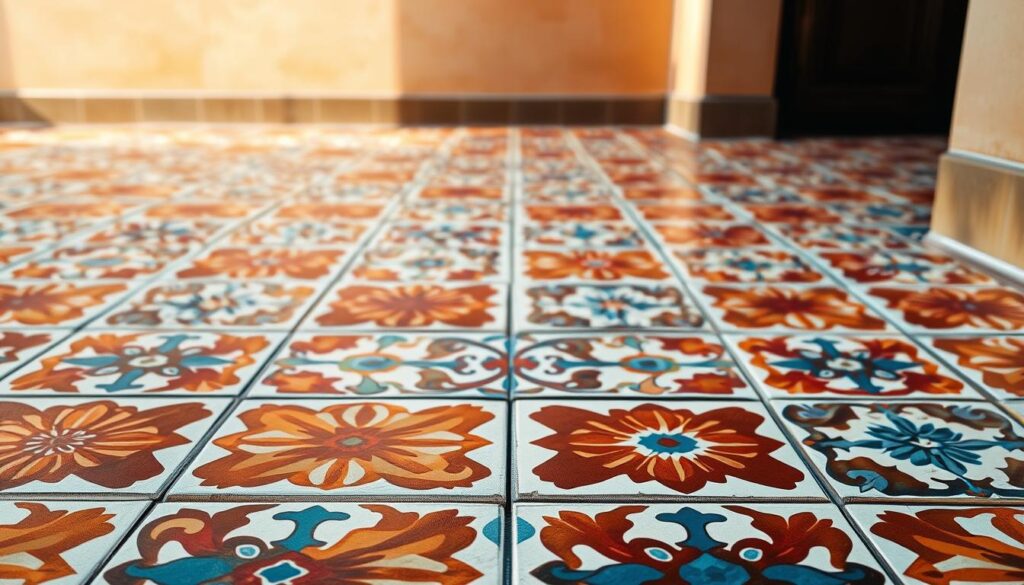
Incorporating Traditional Spanish Art
Traditional Spanish art is a big part of Spanish-style interiors. This includes ceramics, textiles, and metalwork that highlight Spain’s artistic past. Ceramics, for example, are not just useful but also add color and life to a room.
Textiles are also important in Spanish-style interiors. Rich fabrics like wool and silk, with intricate patterns, can cover furniture or hang on walls. Metalwork, like wrought iron, is another traditional Spanish art form. It can be used in lighting, railings, and more.
Suggestions for Accessories and Decor
Spanish-style interiors often mix different styles and periods. This creates a unique and personal space. For example, a traditional room can be paired with modern accessories for a striking contrast.
Spanish tiles are a must in these interiors. They have vibrant colors and detailed designs. They can be used for backsplashes, tabletops, or wall decor. Other items like ornate mirrors, colorful rugs, and decorative vases also add to the Spanish feel.
To get a cohesive look, balance different elements. Choose a few statement pieces and add simpler accessories. For instance, a bold tile can be paired with simpler decor to avoid too much.
Designing a Cozy Living Room
In Spanish-style homes, the living room is where comfort meets elegance. We’ll look at how to make a cozy living room that shows the warmth and charm of Spanish style.
Selecting the Right Sofa and Seating
The sofa and seating are key to a cozy living room. For a Spanish style home interior, choose furniture with rustic charm. Think wooden frames and soft upholstery. A sturdy, comfy sofa in a warm, earthy color can be the room’s centerpiece.
Accent chairs with detailed carvings or rustic home decor add character. Make sure the seating encourages talking and feels welcoming.
Integrating Textiles and Patterns
Textiles add warmth and coziness to a living room. Use throw blankets, rugs, and pillows to layer looks. For a Spanish-style home, pick textiles with traditional patterns like Moorish designs or Spanish motifs.
To boost coziness, mix different patterns and textures. For example, a plush area rug in a deep color can be layered under a smaller, patterned rug. This adds depth and interest to the room.
By carefully choosing the right sofa, seating, textiles, and patterns, you can make a living room that’s cozy and truly reflects Spanish style’s warmth and elegance.
Balance in Open Floor Plans
The open floor plan is a key feature in Spanish-style homes. It requires careful planning to create a unified space. This is even more important in homes with a mediterranean design aesthetic, where indoor and outdoor spaces blend seamlessly.
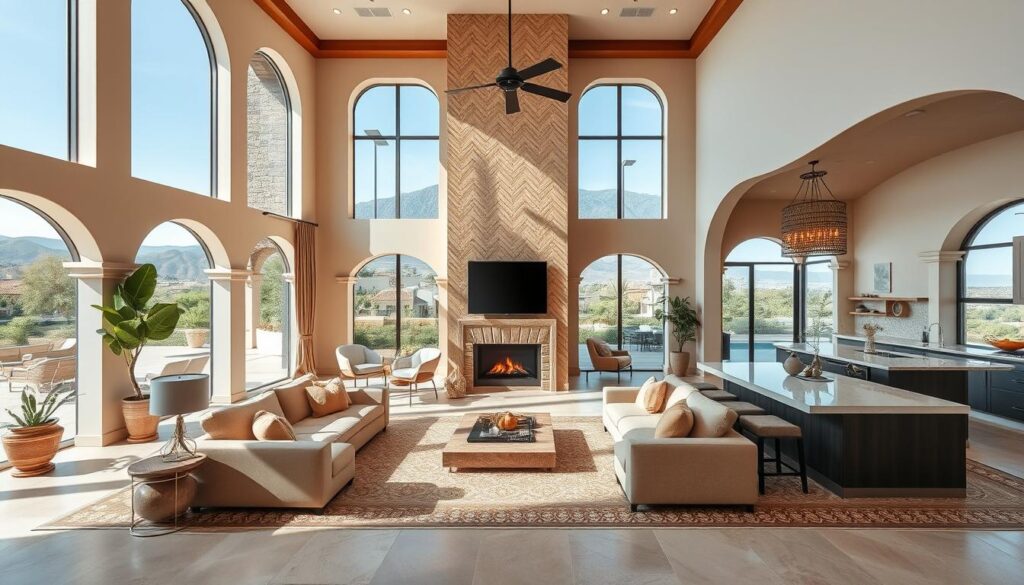
Designing Multi-Functional Spaces
To balance an open floor plan, it’s vital to design spaces that serve multiple purposes. For example, a living area can also be a home office or reading nook. Adding elements of hacienda style, like rustic wood beams and terracotta tiles, brings warmth and character.
- Choose furniture that’s versatile and easy to move around.
- Find storage solutions that look good and work well.
- Pick a color scheme that ties the whole space together.
Creating Flow Between Areas
It’s important to make sure different areas of the open floor plan flow smoothly. Using the same flooring, like terra cotta tiles, helps. Also, placing furniture and decorations thoughtfully guides the eye, making the space feel connected.
Some tips for smooth flow include:
- Keep the design theme consistent across the space.
- Use rugs and mats to mark off different areas.
- Arrange furniture to encourage movement and create paths.
By designing spaces that work well together and ensuring a smooth flow, homeowners can create a welcoming open floor plan. This showcases the charm of Spanish-style design beautifully.
Outdoor Spaces with Spanish Flair
Spanish-style living shines in its outdoor areas. Courtyards, patios, and gardens blend seamlessly. They are filled with Spanish tiles and greenery, showing off Spanish culture.
Courtyards and Patios
Courtyards and patios are key in Spanish outdoor living. They are private spots for chilling and fun. Decorated with colorful tiles, metalwork, and fountains, they look great and feel peaceful.
To make your courtyard or patio Spanish, think about traditional tile work or a fountain. Spanish tiles bring color and energy to the space.
Importance of Landscaping
Landscaping is vital in Spanish outdoor areas. Greenery and plants make them lush and full. Choose plants that don’t need much water for your Spanish garden.
- Use native plants to save water and effort.
- Add fragrant herbs like rosemary and lavender for a richer experience.
- Think about a water feature, like a fountain, to improve the mood.
With these touches, your outdoor space will show off Spanish design. It will also be a calm escape from daily life.
Bringing it All Together
As we finish our Spanish-style home interior, we need to combine all elements. This means balancing old and new furniture, textures, and colors. We aim for an eclectic design that shows our personality and style.
Design Cohesion
To get design cohesion, we must make sure all parts work well together. Choosing a common color scheme and adding rustic touches helps. This creates a cozy and welcoming feel in our home.
Personal Touches
Adding personal touches makes our space special. We can use traditional Spanish art and decorative items. These add character and depth, making our home reflect our story and style.

